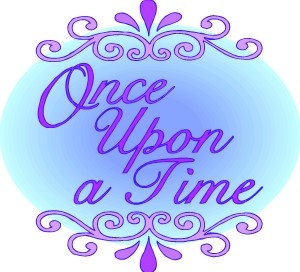 As long as there have been people, there have been stories. From the tale of Oog the Mighty who brought down a mastadon with a single blow of his club to The Hunger Games, people love a good story! We imagine ourselves as the hero, celebrating his victories and suffering his losses right alongside him. Stories are powerful and memorable, which is why they endure.
As long as there have been people, there have been stories. From the tale of Oog the Mighty who brought down a mastadon with a single blow of his club to The Hunger Games, people love a good story! We imagine ourselves as the hero, celebrating his victories and suffering his losses right alongside him. Stories are powerful and memorable, which is why they endure.
Stories work in business communications
How does that relate to PowerPoint presentations? Well if you want your message to stick, it’ll work better if you deliver it like a story. It’s not that far-fetched to think of business stories as a marketing tool. Consider the case study. These tell the story about how an organization was experiencing some sort of negativity until the valiant company rode in on its white horse, providing an excellent solution that saved the day!
If you build your presentations around the classic story arc, they will be more interesting and memorable. Why? Because you will be telling a story that your audience can relate to.
The classic story arc
You can create a powerful story by following the eight steps of the story arc as outlined by Nigel Watts in his book Writing a Novel and Getting Published. The classic story arc follows this path:
-
Stasis
This is where the character, the setting and the world are when the story starts. Yes, you can start in the middle of the action, but even then you would usually do a flashback to cover the stasis point.
-
Trigger
What happens to change everything?
-
The quest
The trigger sets the character upon a quest.
-
Surprise
The surprise will take up a great deal of the story. Unexpected (but plausible) conflicts, complications, or in the manner of Kafka, those little things that keep getting in the way.
-
Critical choice
What choice is your character forced to make? This should not be an easy choice, and the options should each lead to possible further surprises or complications.
-
Climax
This should be the highest point of tension, the place where “the rubber meets the road,” and it should be a direct result of the “critical choice.”
-
Reversal
An inevitable and logical consequence of the critical choice, relentless, plausible.
-
Resolution
In the resolution you are either returned to stasis, or find yourself in a new stasis
Here’s how it translates into a story for a business presentation:
-
Stasis
Sally is a purchaser for The Quill and Pad Office Supply Company. Every year they have their world-famous “fill a bag for a buck” sale for which they order custom-printed brown paper bags.
-
Trigger
One month before the sale, a freak hurricane strikes their main warehouse, destroying their entire inventory of bags, approximately one million pieces! Oh no!
-
The Quest
Sally must get those bags replaced before the sale. The reputation of the Quill and Pad Office Supply Company is at stake!
-
Surprise
Sally calls the bag supplier to get more printed, but they cannot complete the work in such a short amount of time. Panicked, she calls a number of other print vendors who all tell her the same thing.
-
Critical choice
Now Sally must decide whether to go the easy route and simply use plain paper bags or to try to find a new vendor. She chooses to keep trying for the special-order bags. There must be somebody who can help her!
-
Climax
It’s been two days, and she still can’t find a vendor. It looks like they’ll have to go with the plain bags. Maybe she could put a sticker on them…oh, who is she kidding. A million stickers? Please.
-
Reversal
Finally, she looks on the bottom of her own lunch bag and calls the number that’s printed there for XYZ Bag Company. Hooray, they can do the work, even with such a tight deadline!
-
Resolution
Not only were they able to print a million bags for her, they did it for less money than the original vendor! Plus, Sally received her shipment a week ahead of schedule. Because XYZ Bag Company was able to deliver her order in time, Quill and Pad’s annual “fill a bag for a buck” sale was a huge success!
And…scene. See how great that works? By telling a story people can relate to AND by positioning himself as the helpful expert who saves the day, the presenter shows that he’s familiar with the problems that purchasers face every day. He’s helpful, he’s got the goods, and his products are competitively priced. What’s not to like?
So the next time you’re creating a presentation, try including a story or two. If you tell it right, your audience will be hanging on your every word! Stories are a memorable, relatable, and effective way of getting your message across.
Your turn
Have you ever listened to an experienced presenter tell a story? If so, how long ago did you hear him? In other words, how long did his story endure?
